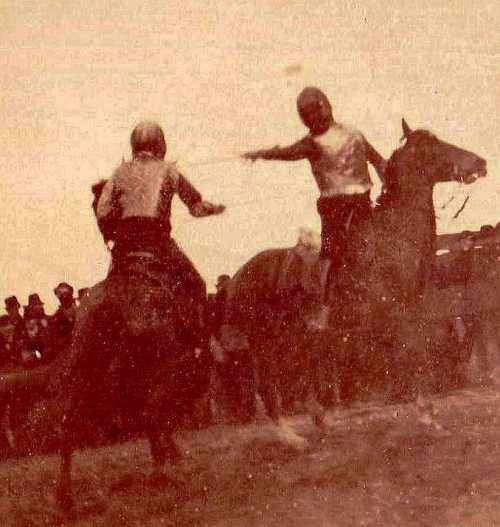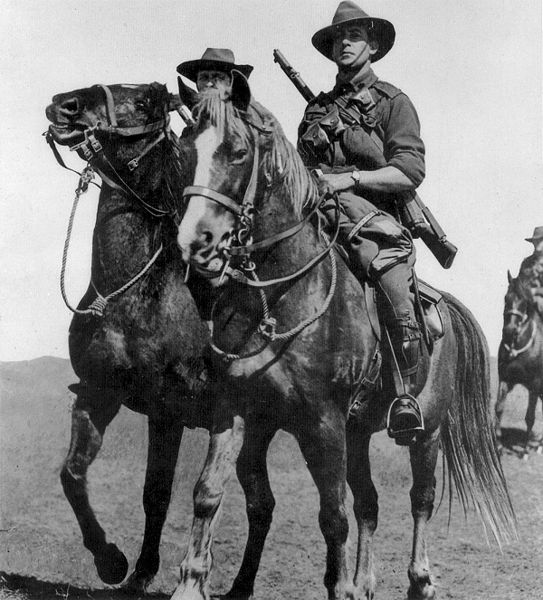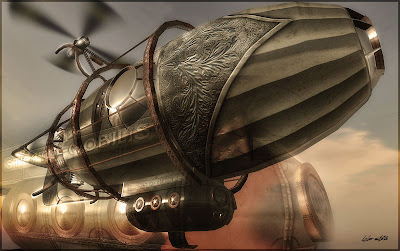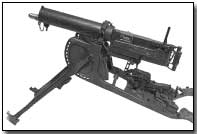Gratia Infinita is a theocratic steampunk nation. The population of the 'Free Lands' formed from a confederacy of various mountain tribes in the Vapor region of Promethia. The population of Gratia Infinita is centered in, of course, the mountains of the region, being the most defensible regions. Christianity came early, and is indeed attributed with being the reason for the nation's existence in the first place, complimenting and replacing the existent pseudo-montheistic religion of the tribes. Gratia Infinita is a moralistic state, and views public policy as an extension of individual morality. With fleets of armored zeppelin airships, the Gratian military, acting under sincere religious convictions, has often policed conflicts between neighboring nations.
History
The mountain tribes of Promithia are generally regarded as a First People, the original inhabitants of the lands they currently hold, from time immemorial. From ancient times, the mountain tribes were fierce fighters, using the terrain to their advantage, and wielding their two-handed longswords with awe-inspiring power that kept their more civilized would-be adversaries at bay. They cultivated plants when they could during the mountain's short growing season, and hunted and tended livestock in the winter months. With the expansion of the Rothian empire out of present-day Inoroth, the tribes were eventually made tributary to the Empire, and Rothian settlers moved into the mountains in small numbers, many of them political exiles. Indeed, the phrase 'Gone to Promithia' became a euphemism for exile in later Rothian society. Rothian cultural and linguistic traits mixed with those of the locals, slowly transforming into a unique cultural matrix distinct from that of the wider Empire.
Most famous among the Rothian political exiles was Iulus Cassus, a man who led the tribe of the Junii out of Rothia and into the mountains, fleeing religious persecution. Monotheists to the core, the Junii found a kindred spirit in the hill-tribes, and Rothian and Promithian culture merged into a concrete whole. As a people, the mountain people more readily accepted Christianity than the Empire at large, and by the time of the Edict of Toleration, Gratia was largely Christian.
Junii warrior, circa 300 AD
As the Rothian empire declined and shrank, the already independent minded inhabitants of the mountains of Promithia began to look to their own welfare. The First Council of Union brought the scattered tribal leaders and patrons together, founding the Ordo Coetus, an order of scholars, warriors, and priests tasked with maintaining unity among the tribes. The Order came to be headed by the Vocator, a supreme executive backed by a Senate of Twelve. Subsequent invasions by barbarian tribes strengthened the Order's hold, and led to the founding of the Knights of the Red Cross, an order of warrior-monks sworn to uphold peace, defend the helpless, and promote justice throughout the world. The Knights eventually became the leading arm of the Gratian military, often entangling the nation at large in foreign wars in their relentless pursuit of justice. Ironically, the Knights also came to serve in diplomatic roles as well, save in the most sensitive of situations.
The origins of the name 'Gratia Infinita' are attributed to the Lament of Iulus , a segment of the national heroic epic detailing the flight of the Junii from Rothia. In the scene, Iulus looks over the city of Roth, despairing as his people leave their homeland, and is poetically attributed as saying 'Only by infinite grace can this land be redeemed.' The (Promithianized) Latin, is of course, Gratia Infinita.

Knights training at swordplay.

Knights mounted and armed.
The Knights of the Red Cross are roughly 10,000 in number. From the age of 10, or at the latest, 13, Knight candidates undergo extensive training in military tactics, weapons proficiency, foreign languages, and the classical Rothian trivium. Physical conditioning emphasizes mental and physical toughness and endurance. Knights train with weapons from around the world.
Geography
Gratia Infinita is located in the mountain ranges of Promithia. (shaded pink)
http://imm.io/Bm8m
Capital City: Mariana
Military
The Gratian population is subject to the draft. All men over the age of 18 are required by law to train with rifle and sword every month, with exception only being made in cases of financial hardship. The full-time military is divided between the Air Corps and the Land Forces, headed by the Knights of the Red Cross.

The Gratian military is also renowned for its pioneering methods of using light, horse and mule drawn artillery in mountainous environments.
Gratian light infantry, note the 'individualized' uniforms.


Cavalry carbine, standard model.
Knight's saber, c. 1870-1915

Gratian Airship Marines
 Model 1887 Machine gun
Model 1887 Machine gunThe Air-Force is the most developed branch of the Gratian military, although zeppelins were not originally developed by Gratian inventors. The Concilium immediately perceived the potential of airships to ferry goods safely over high mountain passes, and to quickly patrol the wide-flung and sparsely inhabited frontiers. Airships are divided into two classes. The larger, less armored Magnus-class airships are designed for heavy bombing and troop transport. The smaller Vastator class airships carry heavy armor and multiple Gatling guns and are especially designed for supporting ground maneuvers on a tactical level. Standard doctrine is to pair two Vastators with a single Magnus. Basic facts below.
Factbook:
Classes of Gratian Airships
Magnus-Class: High altitude bombing, anti-airship. (Roughly )
Crew Compliment: 40
Armament: Nose and aft gatling guns (2 each), midships light howitzers (4 per side), bombing bay in central gondola.
Vastator-Class: Close-air-support: low level bombing
Crew Compliment: 25.
Armament: Fore (1) Aft(1) and midships (3 a side) Gatling guns, small bombing/loading bay. (roughly)
Two forward mounted props on helm-controlled swivels for swift maneuvering, 2 rear mounted engines similarly mounted.
Culture
Gratian culture tends to seek to embrace the best aspects of tradition, while facing the future with an open and inquiring mind. Ancient Rothian motifs still echo throughout Gratian culture, especially in regards to the use of draped robes in formal attire for both men and women, the popularity of (gender segregated) public baths in major cities, and the major architectural styles. In more rural areas, native Promethian monolithic stone architecture tends to prevail, and ancient holidays that predate Rothian settlement are still celebrated, albeit in a Christianized form. Most notable among these ancient festivals is the Midsummer Festival of Lights, marked by floating lanterns, feasting, and all-night games played by children and adults alike.
Gratian character tends towards religious zealotry, moral scrupulousness, and a fairly widespread concern for the welfare of others both within and without the community. Indeed, Gratian charities, almshouses, and orphanages are among the most pioneering ministries and aid organizations in the world. In their persons and habits, most Gratians tend to be quiet, serious, sober, and undemonstrative in public, while deeply emotional in their private lives.
Government
The Ordo Coetus (Also Ordo Unitatis) is headed by a seven-member council (Concilium Unitatis) that is invested with ecclesiastical, executive, and military authority. The Magisters of the council are selected by their predecessors based on suitability for the position.





